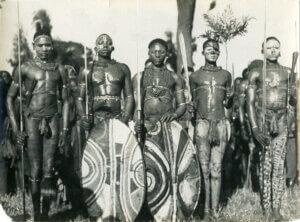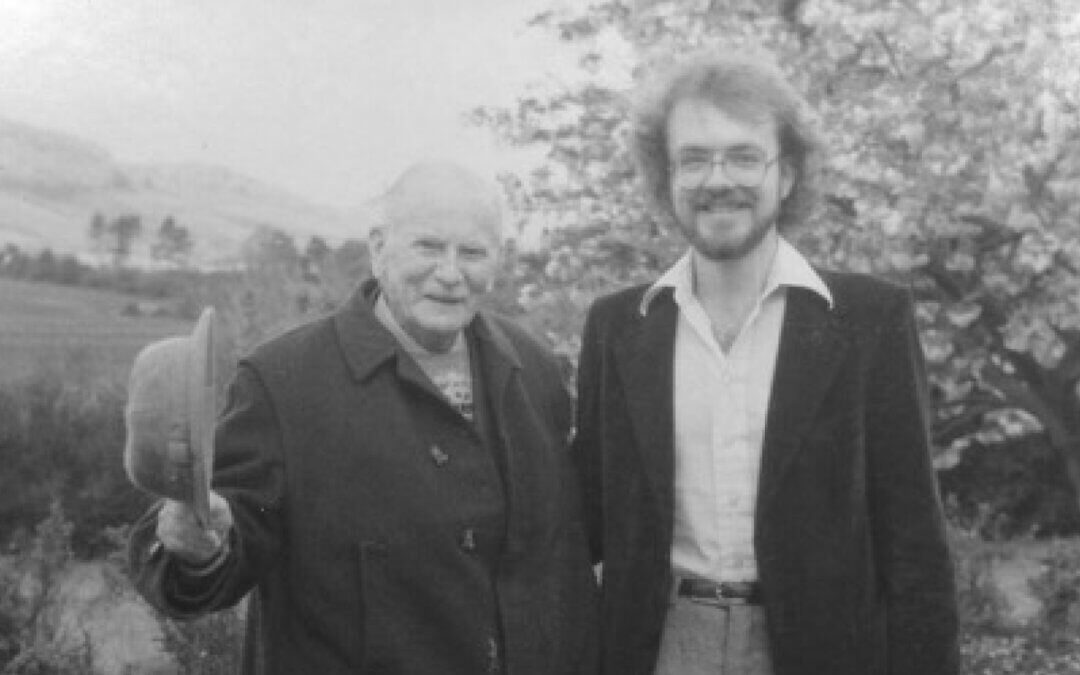In celebration of Earth Month, we offer this guest article by Hugh Locke, President of the Haiti Smallholder Farmer’s Alliance:
Richard St. Barbe Baker (1889 – 1982) was a renowned forester who is recognized as the first global conservationist. He founded the Men of the Trees in 1922 in Kenya, and the International Tree Foundation (ITF), as it is now known, is celebrating its centenary this year. As trees have become widely accepted as central to our current efforts to combat climate change, it is worth exploring the legacy of this remarkable man whom I was privileged to call my friend and mentor for the last six years of his life.
The ITF has just published a special issue of their Trees Journal to mark the centenary, with a foreword by HRH The Prince of Wales. My tribute was also included in that publication, and I would like to share it with you.
St. Barbe’s Prescient Legacy
by Hugh Locke
When the leaders of more than 100 countries gathered recently in Glasgow, their pledge to end deforestation by 2030 echoed Richard St. Barbe Baker’s vision of world forestry as the beating heart of a global enterprise to restore the earth.
The legacy of St. Barbe, as he was known to friends and colleagues, is more relevant now than ever. His life’s work is replete with remarkably prescient insights and practical examples that, while ending four decades ago, still read like the trouble shooting chapter in the owner’s manual for our planet.
The United Nations summit on climate change in Glasgow is a case in point. In 1943 St. Barbe held the first of what he called the World Forestry Charter Gatherings. Meeting regularly over 15 years, the London-based diplomatic representatives of as many as 45 governments from around the world came together to discuss the key role of forests in global ecology.
The World Forestry Charter Gathering in 1951 passed a resolution proclaiming a Green Front Against the Desert. Thus was born one of St. Barbe’s boldest initiatives. It began when he led the first ecological survey of the Sahara desert the following year. Then in early 1953 he announced plans to stop the desert’s southern spread and reclaim large portions by planting a belt of trees the breadth of the continent. While this concept found only sporadic support at the time, it anticipated the epic Great Green Wall movement now underway to plant trees and restore landscapes along the southern edge of the Sahara and spanning the entire width of Africa.
St. Barbe was a lone voice for much of his life as he spoke of trees as being key for human survival. He described forests as, “a community of living things, the greatest of which is the tree.” Thought as quaint at the time, this idea is mainstream now that science has confirmed forests are in fact home to most of earth’s terrestrial biodiversity.
To anyone who would listen, St. Barbe warned that if forest cover ever went below one-third of global land area, the earth would lose the capacity to heal itself from humanity’s destructive impact. Deforestation has brought us to the point where forests now cover just 31 percent of land on the planet, and indeed climate change has become an existential crisis.
As the governments of the world finally take up the rallying call of the first World Forestry Charter Gathering, may they also heed the example of St. Barbe and engage the full spectrum of human society in this undertaking. When he launched the Men of the Trees in 1922, now the International Tree Foundation, it was with Kikuyu farmers in Kenya. For the remainder of his life St. Barbe was able to enlist people from all walks of life and all corners of the globe to the cause of trees. This must also be the hallmark of one of the world’s greatest collective undertakings as we set out to save ourselves by saving our forests.

The smallholder farmers and herders in this photo taken by St. Barbe were among the first 50 members of the Men of the Trees (later the International Tree Foundation) when it was launched on July 22, 1922 in Kenya. Each of them made a solemn promise “to do one good deed each day, plant ten trees, seedlings or seeds each year and take care of trees everywhere.”
Baker Collection at University of Saskatchewan
St. Barbe arrived in the Canadian prairie city of Saskatoon in 1909, and the following year enrolled in the second class of the newly established University of Saskatchewan. At his passing in 1982, the University agreed to host St. Barbe’s extensive archives. Already one of the four most requested archival collections at the University, a new Baker Collection website has been launched to coincide with the ITF centenary. This is part of a project to digitize a major portion of the contents. The first phase, now being completed, includes photographs, audio, film, St. Barbe’s books, and footage from Academy Award-winning Christopher Chapman’s unfinished documentary. To access the Baker Collection: http://stbarbe.library.usask.ca/
Another excellent resource is Paul Hanley’s biography, Man of the Trees: Richard St. Barbe Baker, the First Global Conservationist.

